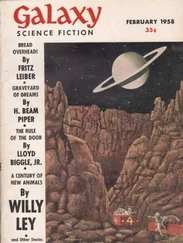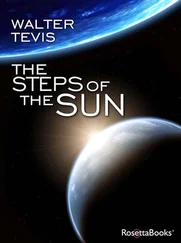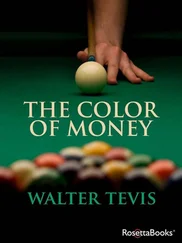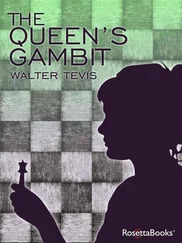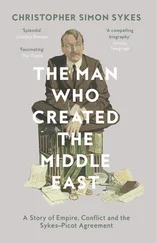The clerk squinted at him—did the light hurt his eyes, too?—and said, “What film?”
“The color. Worldcolor.”
“Oh. I didn’t—”
“Sure, I know.” He was surprised that his voice was impatient. He wasn’t in the habit of interrupting people.
The old man frowned slightly, and then shuffled over and pulled down a box of the film. Then he set it down on the counter in front of Bryce, with exaggerated firmness, saying nothing.
Bryce picked up the box and looked at the label. Under the big letters was printed, in small letters: A Grainless, Perfectly Balanced Color Film. And below this: ASA film speed: 200 to 3,000, depending upon development. My God! he thought, the speed can’t be that high. And variable?
He looked up at the clerk. “How much is this?”
“Six dollars. That’s for thirty-six pictures. For twenty it’s two seventy-five.”
He felt the box, which was light in his hand. “That’s pretty expensive, isn’t it?”
The clerk grimaced, in some kind of old man’s annoyance. “Not when you don’t pay for developing it.”
“Oh, I see. They develop it for you. You get a mailing envelope…” He broke off. This was a stupid conversation. Somebody has invented a new film. What did he care; he wasn’t a photographer.
After a pause, the clerk said, “No.” And then, turning away, toward the door, “It develops itself.”
“It what?”
“Develops itself. Look, you want to buy the film?”
Not answering, he turned the box over in his hand. On each end was printed, boldly, the words, Self-Developing. And it struck him. Why haven’t I heard about this in the chemical journals? A new process…
“Yes,” he said, distractedly, looking at the label. There, at the bottom, was the fine print: W. E. Corp. “Yes. I’ll buy it.” He fumbled his billfold out, and gave the man six crumpled bills. “How does it work?”
“You put it back in the can.” The man picked up the money. He seemed soothed by it, less truculent.
“Back in the can?”
“The little can that it comes in. You put it back in the can when you’ve shot all your pictures. Then you press a little button on top of the can. It tells you. There’s directions inside. You press the button once, or more times—depends on what they call ‘film speed.’ That’s all there is to it.”
“Oh.” He stood up, his coffee unfinished, putting the box gingerly in his coat pocket. Leaving, he asked the clerk, “How long has this stuff been on the market?”
“The film? About two, three weeks. Works fine. We sell a lot of it.”
He walked directly home, wondering about the film. How could anything be that good, that easy? Absently, he pulled the box from his pocket, peeled it open with his thumbnail. Inside was a blue metal can, with a screw top, a red button sticking up from it. He opened it. Wrapped in a sheet of directions was an ordinary-looking cassette of 35-millimeter film. Under the canister top, beneath the button, was a small grid. He felt this with his thumbnail. It seemed to be made of porcelain.
At home, he dug an ancient Argus camera out of a drawer. Then, before loading it, he pulled about a foot of the film out of the cartridge, exposing it, and then tore it off. It felt dull to the touch, without the usual slickness of a gelatinous emulsion. Then he loaded the rest in the camera and exposed it rapidly, taking random pictures of the walls, the radiator, the pile of papers on his desk, shooting at an 800 speed in the dim light. Then, finished, he developed the film in the can, pressing the button eight times and then opening it, smelling the can as he did so. A faint bluish gas with an acrid, unrecognizable smell came out. There was no liquid in the can. Gaseous development? He took the film out hastily, pulling the strip from the cartridge, and, holding it up to the light, found a set of perfect transparencies, in fine, life-like color and detail. He whistled aloud and said, “Goddamn.” Then he took the piece of blank film, and the transparency strip, and went into the kitchen with them. He began setting up the materials for a quick analysis, arranging rows of beakers, getting out the titration equipment. He found himself working feverishly, and did not take the time to wonder what was making him so frenetically curious about the thing. Something about it was nagging at him, but he ignored it—he was too busy….
* * *
Five hours later, at six o’clock in the morning, with a gray and bird-noisy sky outside the window, he fell back wearily into a kitchen chair, holding a small piece of the film. He had not tried everything with it; but he had tried enough to know that none of the conventional chemicals of photography, none of the silver salts, were in the film. He sat, red-eyed and staring, for several minutes. Then he got up, walked with great weariness to his bedroom and fell, half-exhausted, on the unmade bed. Before he fell asleep, still dressed, with birds shouting outside his window and the sun rising, he said aloud, his voice wry and gravelly, “It’s got to be a whole new technology… somebody digging up a science in the Mayan ruins… or from some other planet….”
People moved up and down the sidewalks in shifting, fast-paced crowds, dressed in spring clothes. Everywhere there seemed to be young women, high heels clicking (he could hear them, even from the car), many of them brilliantly dressed, their clothes preternaturally bright in the strong morning light. Enjoying the sight of the people and the colors—even though they hurt his still over-sensitive eyes—he told his driver to go slowly down Park Avenue. It was a lovely day, one of the first truly bright days of his second spring on earth. He leaned back, smiling, against the specially-designed back cushions and the car moved downtown at a slow and steady speed. Arthur, the driver, was very good; he had been chosen for his smoothness, his ability to hold speed steadily, to avoid sudden changes in movement.
They turned over to Fifth Avenue at midtown, pulling up in front of Farnsworth’s old office building, which now bore, at one side of the entranceway, a brass plaque that read, in discreet raised letters: World Enterprises Corporation. Newton adjusted his dark glasses to a darker shade, to protect against the outside sunlight, and eased himself out of the limousine. He stood on the pavement, stretching, feeling the sun—mildly warm to the people around him, pleasantly hot to him—on his face.
Arthur put his head out the window and said, “Shall I wait, Mr. Newton?”
He stretched again, enjoying the sunlight, the air. He had not left his apartment for over a month. “No.” he said. “I’ll call you, Arthur. But I doubt I’ll need you before evening; you may go to a movie if you’d like.”
He walked in, through the main hallway, past the rows of elevators, and down to the special elevator at the end of the hall, where an attendant awaited him, standing stiffly, his uniform impeccable. Newton smiled to himself; he could imagine the flurry of commands that must have gone out the day before, after he had called and said he would be coming in the next morning. He hadn’t been in the offices for three months. It was seldom that he ever left his apartment. The elevator boy gave him a rehearsed and nervous, “Good morning. Mr. Newton.” He smiled at him and stepped in.
The elevator took him slowly and very smoothly up to the seventh floor, which had formerly housed Farnsworth’s law offices. Farnsworth was waiting for him when he stepped out. The lawyer was dressed like a potentate in a gray silk suit, a brilliant red jewel flashing on a fat and perfectly manicured ring finger. “You’re looking well, Mr. Newton,” he said, taking his extended hand with gentle care. Farnsworth was observant; he would have noticed, quickly enough, the wince that Newton made if he were touched roughly in any way.
Читать дальше

